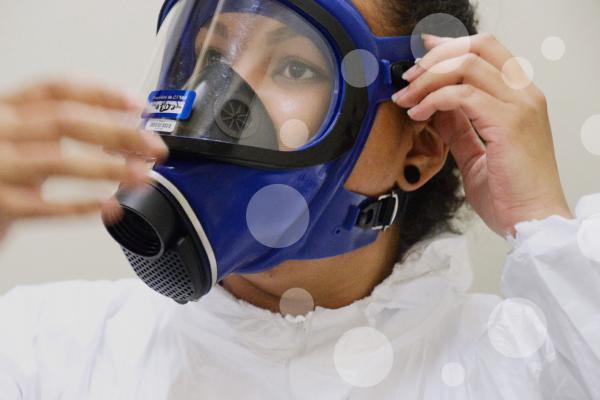Safeguards inspectors from DG ENER and IAEA use the tools developed at the JRC in several facilities for the verification of the Basic Technical Characteristics (BTC) and for the Design Information Verification (DIV).
The inspection activities include the verification of declared changes using static scanners, as well as verifying the absence of undeclared changes using mobile scanning. JRC provides technical support, both in preparation and during the on-site activities, including training the inspectors in the use of the 3D technologies.
Overview of the 3D verification pipeline. Laser sensors (left) allow building accurate 3D reconstructions of full facilities (centre-left) which are used as reference models. These models can be used to verify operator-provided design information of the facility (top-right), to perform accurate 3D analysis of changes over time (centre-right) or to perform real-time change detection (bottom-right).
3D laser scanning
3D laser sensors allow building accurate 3D reconstructions of entire facilities and performing safeguards verifications over time. Depending on the use-case, two types of sensors are used:
(1) static laser scanners, which provide high-resolution models with millimetre accuracy at the expense of long acquisition times (in the order of minutes per scan) and
(2) mobile laser scanners, that provide real-time scans at the expense of lower resolution and accuracy (in the order of centimetres).

The Mobile Laser Scanning Platform
The Mobile Laser Scanning Platform (MLSP) is a portable system developed by the JRC to support nuclear inspectors in safeguards applications. It is based on 3D SLAM (Simultaneous Localization And Mapping) technology: the laser scanner acquires several 3D scans per second and builds a 3D map as the sensor moves through the environment. One of the key benefits of the system is that it does not rely on global positioning sensors, so it can work in GPS-denied environments (i.e. indoor or underground environments). JRC has patented the MLSP and concluded a license agreement with an SME, covering commercialization in non-nuclear applications.

STeAM Desktop processing software
STeAM Desktop is the in-house developed software for processing the 3D data acquired with the laser scanners. It has two main purposes: Sensor integration and scan alignment. The software imports scans from different sources (e.g., static laser scanners, the MLSP or 3rd party models) and combines/aligns them, resulting in a single, globally consistent 3D model.
Data analysis: STeAM Desktop provides a wide range of analysis tools that were developed for the specific needs of the nuclear safeguards inspectors. Amongst others, it allows to compare 2D CAD drawings with 3D scanned models, 3D scans with other 3D scans or improving the live change analysis performed by the MLSP.
Featured applications
The technology has multiple applications, both in the nuclear and non-nuclear other fields. Some example use cases are:
Onkalo (FI) spent nuclear fuel repository: The technology was demonstrated by the JRC in 2007 in the Finish geological repository. Deployment by DG ENER and IAEA started in 2014 when a first reference 3D model was created. The inspectors update on a yearly basis the model with scans of new tunnels. To verify declared changes in the previously scanned areas the inspectorates use the mobile mapping system.
Pierrelatte (FR) storage: Nuclear safeguards inspectors use JRC’s 3D technology for the yearly verification of the declared inventory of nuclear material at the Pierrelatte storage facility in France.
JRC Ispra (IT) decommissioning : The 3D Information Management System (3DIMS) is a 3D database supporting JRC decommissioning activities in Ispra (IT). It was developed to geo-locate and track all the items in the facility under decommission (Fig. 3 – left). It is based on a full 3D model of the ESSOR reactor and the INE area at JRC Ispra.
Gamma radiation mapping: MLSP has the ability to act as an accurate GPS that works both outdoors and also indoors. It combines the measurements of a portable gamma detector with accurate live positioning. The results (Fig. 3 – right) are accurate radiation maps of nuclear facilities that can be computed in real-time.
Non-nuclear applications: Through the collaboration with other JRC units and the license agreement of the technology, the potential of the 3D mapping systems has been demonstrated in other domains, including infrastructure mapping in the JRC, construction monitoring, mapping of underground mines and cultural heritage.


